Artisan Hot Chocolate: A Global Exploration
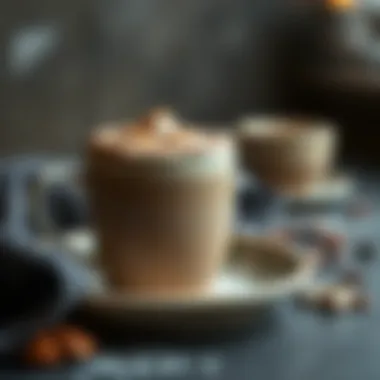
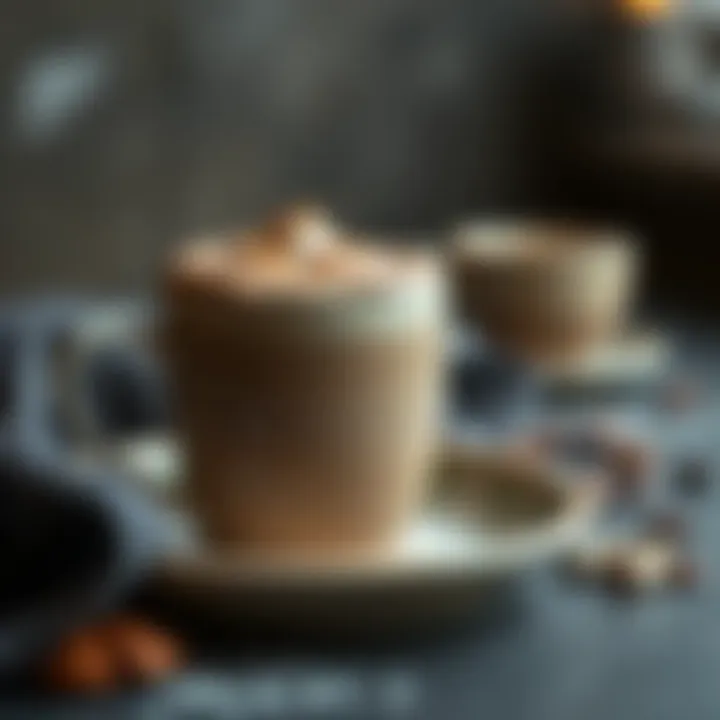
Intro
When one thinks of chocolate, often their mind drifts to the sweet simplicity of a childhood treat or a quick fix from the nearest café. However, there lies an entire universe of artisan hot chocolate, layered in history, craftsmanship, and culture. This exploration above mere consumption encourages a profound appreciation for the meticulous artistry behind every velvety sip. Did you know that the distinctive flavors of artisan hot chocolate not only vary by region, but also tell stories as rich as their frothy textures?
The journey of artisan hot chocolate is like an elaborate tapestry, woven with the threads of diverse culinary traditions. From its ancient roots in Mesoamerica to its modern interpretations around the world, hot chocolate has evolved into a sophisticated beverage that reflects local ingredients and culinary techniques. By utilizing premium cacao, handmade syrups, and innovative preparation methods, artisans in various cultures transform an everyday indulgence into an extraordinary experience.
This article will take you on a crafted tour of artisan hot chocolate, delving into its origins, the various ways to prepare it, and even some freshest trends that are stirring excitement among enthusiasts. We will also discuss how to enhance flavor profiles and discover perfect pairings to complement this delightful drink. Join us as we peel back the layers of this beloved beverage, inviting you to savor each moment beyond the simple mug.
Key Points to Explore
- The historical significance of cacao in various cultures
- An in-depth look at artisan crafting methods
- Insights into the sensory experience of tasting artisan hot chocolate
- Innovative flavor enhancer ideas and pairing suggestions
Let's embark on this aromatic journey, which goes beyond the ordinary and reveals the wonders of artisan hot chocolate.
The Origins of Hot Chocolate
The journey of hot chocolate begins centuries ago, rooted in ancient civilizations that recognized cocoa’s value far beyond simple taste. Understanding the origins of this beloved beverage sets the stage for appreciating the nuanced flavors and traditions that inform modern artisan practices. This exploration delves into not only how hot chocolate has evolved but also its significance across various societies, revealing the threads that connect us through shared experience and culture.
Historical Context
Hot chocolate, in its earliest form, was a frothy drink made from ground cacao beans, often consumed by the Olmecs in Mesoamerica around 1500 BC. This bitter concoction was far removed from the sweetened delights we experience today. The Mayans and Aztecs later embraced the beverage, seeing it as a divine gift and even using it in rituals and ceremonies. As legend unfolds, chocolate was often spiced with vanilla, chili peppers, and other local ingredients, showcasing a complexity in flavor that many still appreciate in artisan versions today.
When the Spanish conquistadors encountered this drink in the early 16th century, they brought it back to Europe, albeit sweetened with sugar to cater to European palates. By the time hot chocolate became popular across the continent, it transformed into a sign of luxury and sophistication. In England, for instance, hot chocolate houses started popping up in the 18th century, akin to modern cafes, becoming social hubs where ideas were exchanged alongside cups of rich, warm chocolate.
"In its transformation from bitter to sweet, hot chocolate mirrored the cultural shifts of societies, becoming a canvas for culinary experimentation and social interaction."
This historical tapestry highlights not just the evolution of hot chocolate but also its role in establishing social dynamics. From sacred rituals to leisurely gatherings, hot chocolate has been a comfort and a connector, a theme that resonates in the artisan movements of today.
Cultural Significance
Examining hot chocolate’s cultural significance offers insights into how food and drink can embody identity and tradition. In many Latin American countries, for instance, hot chocolate is still enjoyed with pastries during festive occasions. The flavor often carries a nostalgic weight, evoking memories of family gatherings and communal experiences.
In European contexts, especially in regions like Belgium and Switzerland, artisan hot chocolates take on unique expressions. Here, chocolate is crafted with precision and care, reflecting pride in culinary arts. The nuances in flight of flavor—from the intensity of dark varieties to the creaminess of milk chocolates—highlight local tastes and influences.
This rich cultural resonance shows hot chocolate is not merely about physical nourishment; it serves as a vessel for cultural exchange and understanding. Each sip can transport one to a different time and place, encapsulating the harsh realities and the vibrant celebrations of various societies over centuries.
Emphasizing the origins and cultural significance of hot chocolate enriches our understanding of each artisan cup we hold. Knowing its roots not only fosters appreciation but also urges us to explore how modern interpretations stay true to age-old traditions while still carving out new pathways for future generations.
Defining Artisan Hot Chocolate
Artisan hot chocolate isn’t just a drink; it’s an experience that transcends a simple cup of warmth. When discussing hot chocolate, it’s crucial to delineate what separates ordinary offerings from the artisan variety. The nuances in preparation, ingredient quality, and personal touch all create a beverage that's truly distinguished and appeal to those with a palate that craves depth and complexity.
Distinctions from Standard Hot Chocolate
Most people are familiar with the standard hot chocolate served from a mix or a quick stove top prep. It’s often sweet, mildly chocolaty, and can sometimes leave a bit to be desired. Now, artisan hot chocolate ventures far beyond that. Here are a few key distinctions:
- Quality of Chocolate: Artisan hot chocolate typically uses high-quality, real chocolate rather than powdered cocoa or processed mixes. It may even feature single-origin cacao that brings unique flavors and characteristics from its specific growing region.
- Texture and Consistency: The texture is richer and creamier, often because of the use of whole milk or alternative milks. A standard hot chocolate might be thin and watery; while artisan versions often incorporate techniques like whisking or frothing that elevate the mouthfeel.
- Flavor Complexity: Standard hot chocolate generally sticks to a familiar, sweet flavor profile. Artisan versions, on the other hand, thoughtfully incorporate spices, herbs, and other flavorings that add a layer of depth.
Artisan hot chocolate invites drinkers to consider the craftsmanship behind the beverage, much as one does with fine wines or gourmet cheese.
Focus on Quality Ingredients
In the world of artisan hot chocolate, ingredients are king. The emphasis on sourcing can make all the difference. Here’s what sets these quality ingredients apart:
- Chocolate Source: Artisans often select chocolate from small-batch makers or sustainable farms. Cacao beans should ideally be sourced from regions known for their quality, such as Madagascar or Ecuador. The further distance the chocolate travels from bean to cup, the more nuance it can exhibit.
- Milk and Dairy Alternatives: The choice of milk plays a crucial role. Artisan hot chocolate may feature fresh, preferably local milk, or alternative milks such as almond, oat, or coconut that contribute unique flavors and richness. Some even use buttermilk for a delightful tang.
- Flavor Additives: Beyond the chocolate, artisan recipes might incorporate spices like cinnamon, or cardamom, and even flavored oils like vanilla or hazelnut. Some creators go the extra mile by incorporating elements like dried lavender or chili for an unexpected twist.
The notion that “you are what you eat” reigns true in the world of artisan hot chocolate. Using top-grade ingredients not only enhances taste but reflects the overall experience—one that is thoughtful, intentional, and savored sip by sip.
Artisan hot chocolate is a celebration of the multifaceted flavors that can be unearthed through effort and attention to detail. It’s about crafting not just a drink, but a memorable experience that resonates with both the maker and the consumer.
Crafting Artisan Hot Chocolate
In the realm of sweets, crafting artisan hot chocolate stands distinct. This is not just your average drink; it's a sensory experience that invites you to indulge in exceptional flavors. The very act of crafting embodies the philosophy of slow food, where each ingredient is carefully considered. By focusing on quality cocoa, fresh ingredients, and innovative techniques, the art of making hot chocolate transforms it from a simple beverage into a celebration of taste and texture.
Selecting the Right Cocoa
Selecting the right cocoa is like choosing the heart of your dish. It's the foundational element that carries the whole symphony of flavors. The differences between single-origin and blended chocolates introduce a world of richness and character.
Single-origin vs. blended
Single-origin cocoa often heralds from one specific region, showcasing distinct flavor notes that reflect its geographical identity. For example, a cocoa sourced from Ecuador may deliver a delightful hint of fruitiness, while one from Madagascar can resonate with vibrant acidity and aromatic notes. This uniqueness makes single-origin a cherished choice for many chocolatiers who wish to highlight specific profiles. On the other hand, blended chocolates bring together various beans, creating a balanced but less distinctive flavor. They're often seen as a safer choice, providing consistency across different batches, though they might lack the punch of a single-origin bean. However, the act of blending can also produce surprisingly complex flavor combinations, appealing to those who love experimentation.
Dark, milk, or white chocolate options
When it comes to chocolate types, the choice between dark, milk, or white chocolate can significantly alter the hot chocolate experience. Dark chocolate, with its higher cocoa content, offers a rich and intense flavor profile, acting as a sophisticated choice for those who appreciate deeper cocoa hints. Meanwhile, milk chocolate, being sweeter and creamier, caters to those wanting a smoother drink, thanks to its sugar and milk solids. White chocolate, often seen as the odd one out, brings a sweetness that some may find overly cloying but can be enhanced with other flavors like spices or citrus, making it an underutilized gem in artisan hot chocolate crafting.
The Importance of Fresh Ingredients
Fresh ingredients are to artisan hot chocolate what a blank canvas is to an artist. They can either elevate or diminish the drink's overall experience. Selecting high-quality ingredients is essential for a lasting impression and flavors that dance on the palate.
Quality milk alternatives
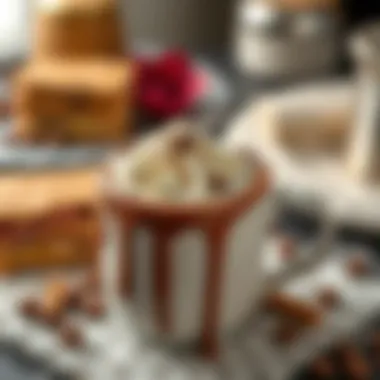
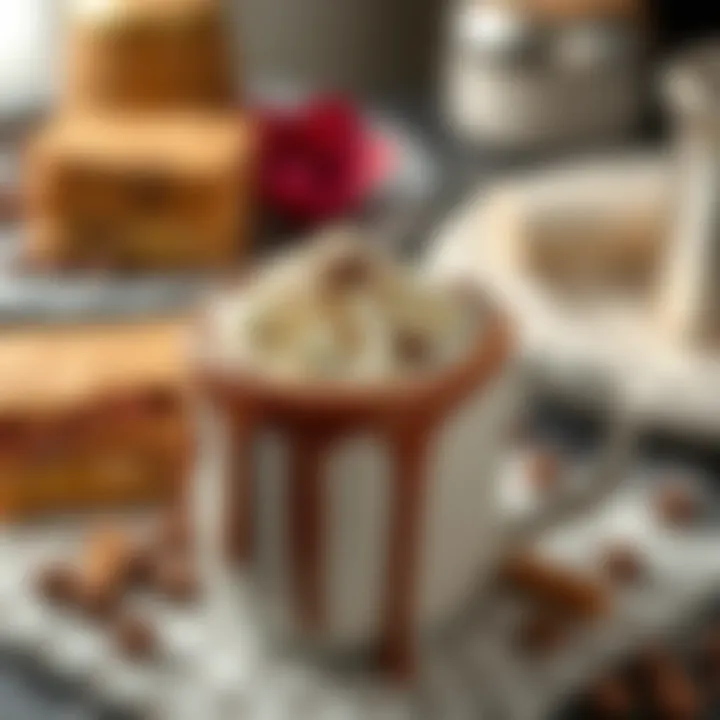
Quality milk alternatives get more attention today, as people explore options beyond traditional dairy. Almond milk, oat milk, and even coconut milk can introduce a multitude of flavors, alongside catering to dietary needs. Oat milk, for instance, offers a creaminess that mimics whole milk, making it a popular choice among many. These alternatives often contribute additional flavor profiles that can enhance the overall taste of the hot chocolate, providing unique variations that can transform a basic recipe into something extraordinary.
Spices and flavorings
Spices and flavorings can act as the finishing touch to your artisan hot chocolate, and they open up new avenues of taste. A sprinkle of cinnamon can add warmth, while chili or even sea salt can offer an enticing contrast and complexity. Maybe you're curious about the zest of orange or the vibrant kick of ginger. These additions are not merely decorations; they are integral ingredients that breathe new life into your hot chocolate, allowing you to customize each cup to personal satisfaction.
"A thoughtful combination of spices can turn an ordinary hot chocolate into a memorable experience, rivaling even your favorite dessert."
Each ingredient plays an important role, ultimately allowing for a deeper understanding of what makes artisan hot chocolate a cherished craft. A conscious effort to select and utilize high-quality, fresh ingredients alongside focused techniques will elevate the hot chocolate experience for both the maker and consumer. By embracing these elements, you're not just creating a drink; you're crafting a lavish moment to savor.
Preparation Techniques
Preparation techniques play a pivotal role in the world of artisan hot chocolate, influencing not just the flavor and texture but also the overall experience that each sip offers. Those who indulge in this luxurious beverage often appreciate the subtleties that different methods bring into play. By utilizing various techniques, one can yield distinctive and delightful results, capturing the essence of high-quality cocoa and enhancing its revered stature.
Traditional Methods
Stovetop vs. microwave
When it comes to preparing artisan hot chocolate, a common debate arises surrounding the stovetop versus microwave method. While the microwave offers a quick and simplistic way to heat your beverage, the stovetop technique is celebrated for its depth of flavor.
- Key Characteristic: The stovetop method involves careful control of temperature, allowing the cocoa solids to fully dissolve and blend with the other ingredients. This results in a creamy and velvety texture that many aficionados find irresistible.
- Benefits: Crafting hot chocolate on the stove facilitates the infusion of flavors. Spices such as cinnamon or nutmeg can meld beautifully, promising a layered taste profile.
- Disadvantages: The stovetop approach does take more time and attention compared to simply popping a mug in the microwave.
In summary, while microwaves offer convenience, the stovetop method prevails in delivering a rich, hearty brew that embodies the essence of artisan hot chocolate, making it a preferred choice for those looking to savor every moment.
Whipping techniques
Another vital aspect of preparing artisan hot chocolate involves whipping techniques, which turn a humble drink into an exceptionally enjoyable treat. Whipping creates air and adds volume, ensuring a luscious mouthfeel.
- Key Characteristic: Techniques like using a hand whisk or an electric frother can introduce that creaminess that many hot chocolate enthusiasts seek. The frothing action creates a rich foam that elevates both presentation and taste.
- Benefits: Whipping enhances the overall texture and allows flavors to mingle more thoroughly. The airy, whipped quality makes each sip feel indulgent, as if it's a special treat rather than an everyday drink.
- Disadvantages: However, whipping can be time-consuming and may require practice to achieve the desired texture, particularly if one opts for the traditional hand-whisk technique.
The art of whipping can indeed be a rewarding and delightful process, as it lends an elevated experience to artisan hot chocolate that can't be replicated by simply serving it straight from the pot.
Innovative Approaches
Sous vide hot chocolate
A modern twist in the preparation methods is the sous vide technique. This method involves cooking ingredients under vacuum at controlled temperatures, promising precision and consistency.
- Key Characteristic: Sous vide allows for gentle heating, preserving the delicate flavors of cocoa without scorching it. This can result in a smoother finish and well-integrated flavors that traditional methods may not achieve.
- Benefits: Because sous vide maintains a consistent temperature, it minimizes the risk of clumps and fosters a more even infusion of flavor throughout. The resulting hot chocolate isn't just a drink; it becomes a work of culinary art.
- Disadvantages: The method requires special equipment, which may not be readily available in all kitchens. It also takes longer than conventional heating methods, which might deter some from trying it out.
Using the sous vide method positions artisan hot chocolate into a sophisticated light, attracting the curious and the culinary adventurous alike.
Cold brew methods
Lastly, cold brew methods offer an entirely different approach to hot chocolate, favoring flavor extraction without the heat.
- Key Characteristic: This process entails steeping cocoa or chocolate in cold water, allowing for a slow extraction of flavors. Many coffee enthusiasts have embraced cold brew, and the same concept can be intriguingly applied to hot chocolate.
- Benefits: Cold brewing can reduce acidity and result in a smoother, less bitter hot chocolate, allowing the natural sweetness of chocolate to shine. This method is particularly appealing for those who want a refreshing twist.
- Disadvantages: The cold brew requires preparation in advance, as the infusion can take hours to develop, which might not please those with a craving for instant gratification.
Flavor Profiles and Customization
Artisan hot chocolate transcends the ordinary experience of sipping a hot drink; it becomes an intricate exploration of taste and nuance. Understanding flavor profiles and customization allows enthusiasts and novices alike to enhance their enjoyment of this timeless treat. The ability to combine various elements not only elevates the drink but also personalizes it to an individual's palate. As artisan hot chocolate gains traction in cafes and homes, diversifying flavors and experimenting with unique ingredients have become paramount for those seeking to create an unforgettable experience.
Combining Flavors
Herbs and Aromatics
Delving into herbs and aromatics introduces layers to hot chocolate that standard offerings simply can't match. Ingredients like mint, cardamom, or even lavender can transform a classic cup into something extraordinary. These components bring a refreshing quality, often complementing the richness of cocoa without overpowering it.
For example, a sprinkle of fresh mint can evoke feelings of a cozy, holiday celebration, while a touch of rosemary adds earthy sophistication, perfect for a modern twist. The unique attributes of these herbs also come down to their health benefits; mint can aid digestion, while cardamom is known for its anti-inflammatory properties.
However, the challenge lies in balance. Too much of a strong herb can send the drink into confusion rather than harmony. Mixing strong flavors requires a delicate hand, and one must be cautious not to stray too far from the intended purpose of warming indulgence.
Sweetener Alternatives
When it comes to sweeteners, the conversation often centers around what can elevate the drink without falling into the commonplace trap of white sugar. For instance, using maple syrup or honey introduces a unique flavor profile that pairs beautifully with the deep notes of chocolate. These alternatives not only add sweetness but also complexity, enriching the drinking experience.
Moreover, sweeteners like coconut sugar are gaining popularity for their lower glycemic index, appealing to the health-conscious. Each alternative has its own unique trait; honey brings floral hints, while brown sugar adds molasses undertones. However, one must also consider that these options can sometimes alter the overall texture or temperature of the drink, so experiment carefully to find the perfect fit.
Toppings and Garnishes
Marshmallows
An undeniable classic, marshmallows add both texture and visual appeal to artisan hot chocolate. Picture it: a fluffy mound of sweetness, pillowing atop a rich, steaming cup. The contrast between the hot liquid and cold, slightly chewy marshmallow creates a delightful sensory experience.
Homemade marshmallows, infused with flavors like vanilla or almond, can make a thrilling addition that surpasses mass-produced versions. Their charm lies not just in taste but in nostalgia; they transport one back to childhood memories, often making them a beloved choice among all ages.
Yet, while they may elevate the experience, marshmallows can also be quite sweet, so one must balance their use to ensure they don’t overwhelm the cocoa’s natural bitterness.
Whipped Cream Variations
Whipped cream opens up a world of creativity with artisan hot chocolate. From traditional whipped cream to more adventurous versions—like salted caramel or cinnamon-infused—each brings its personality to the drink.
The light, airy texture balances dense chocolate, making each sip a refreshing escapade. Infusions in whipped cream can create delightful contrasts, especially as spices meld with the creamy texture, inviting further exploration.


However, it’s vital to monitor how these toppings respond to heat, as some creams may lose their shape or flavor profile if not prepared with care.
The Role of Presentation
When it comes to artisan hot chocolate, the role of presentation cannot be overlooked. The adage “we eat with our eyes first” rings particularly true here. A beautifully presented cup of hot chocolate can elevate the experience, making it as enticing as it is delicious. Given the intricate world of flavors and ingredients discussed earlier, the way hot chocolate is served tells a story that goes beyond the mug itself. It can reflect the care and creativity invested in its preparation and serve as an invitation to indulge in a sensorial experience.
Choosing the Right Serveware
Selecting the appropriate serveware for artisan hot chocolate can greatly influence one's experience. Much like a fine wine served in the right glass, hot chocolate deserves respect in its presentation. The type of mug or cup can create a specific mood, enhance the drink’s visual appeal, and even influence its temperature retention. A few factors to consider include:
- Material: Ceramic mugs are popular as they hold heat quite well, but glass cups can add a visual flair that showcases the drink's rich color and texture.
- Size: A larger cup may seem inviting for those planning to indulge, while a smaller, more elegant cup can convey sophistication and restraint.
- Style: Vintage or handmade mugs can add character and charm, while sleek and modern designs may align better with a minimalist aesthetic.
Whatever you choose, remember that the serveware can be a canvas that complements the flavor palette of your artisan hot chocolate.
Visual Elements of Presentation
The visual appeal of hot chocolate serves not merely as decoration but plays a key role in enhancing the overall experience. Consider the layers and textures that can be displayed:
- Color Contrast: A dark, rich cocoa brought to life with a frothy, white swirl of milk or cream looks appetizing. Consider adding a sprinkle of cocoa powder or colorful spices on top for a splash of color.
- Garnishes: Including unique toppings like edible flowers, zests of citrus, or even a drizzle of caramel can create an inviting invitation. These elements can make the drink look gourmet and encourage an exploration of flavor.
- Layering: Creating layers in the drink with chocolate shavings, whipped cream, or caramel can add depth, not just visually but also in taste. The first sip could be frothy and creamy, while subsequent sips could reveal a richer cocoa layer below.
Global Perspectives on Hot Chocolate
Hot chocolate is more than just a beverage; it’s a cultural thread woven into the fabric of societies around the globe. Each region boasts its own interpretation, reflecting history, traditions, and local ingredients. Discussing global perspectives on hot chocolate allows us to appreciate diversity in taste and preparation while embracing the art that surrounds this cherished drink.
European Interpretations
In Europe, hot chocolate has long been regarded as a luxurious treat. For instance, the Spanish version stands out with its thick consistency, often served with churros for dipping. Spanish hot chocolate is rich, almost pudding-like, and often includes a kick of cinnamon. Meanwhile, in Italy, it’s known as "cioccolata calda," where chocolate is combined with cornstarch, creating an indulgent and velvety experience. French hot chocolate, on the other hand, is celebrated for its elegance, frequently made with high-quality dark chocolate and real cream, resulting in a smooth and decadent drink.
Furthermore, European cafes harken back to a social scene where sipping hot chocolate can come paired with poetry readings or lively discussions, cultivating an environment of culture and creativity.
Latin American Traditions
Latin America lays claim to the roots of chocolate, tracing back to ancient Mesoamerican cultures. Here, hot chocolate is often prepared in a ceremonial fashion. Traditionally, cacao was blended with water, spices, and sometimes even chili, yielding a complex flavor profile. For example, Mexican hot chocolate emphasizes a balance between the smoothness of chocolate and the warmth of spices like vanilla and cinnamon. It is typically served frothy, a result of traditional preparation techniques like whisking the mixture with a wooden tool called a "molinillo."
Another important tradition is the use of cacao not just as a drink, but as a symbol of hospitality and community. When offered, it's a welcoming gesture, inviting people to sit and share stories, bond over memories or simply enjoy each other's company.
Asian Variants
While hot chocolate isn’t as historically prominent in the vast culinary tapestry of Asia, there are intriguing interpretations that deserve mention. For instance, in Japan, you might find "hot chocolate" infused with matcha green tea, creating a novel blend rich in antioxidants and flavor. Some cafes experiment with sweet red bean paste or even hints of spiced chai to create unique, regional adaptations.
In the Philippines, "tsokolate" made from tablea, or cacao tablets, boasts a robust taste that embodies the island's local agricultural heritage. Often served during breakfast with bread or rice, it strays from the typical dessert beverage association prevalent in many other cultures.
In this light, hot chocolate is less about the beverage itself and more about how it connects people, transcending cultural barriers and fostering connections.
"A cup of hot chocolate may warm the body, but its rich history and cultural interpretations warm the soul."
Understanding these global perspectives on hot chocolate adds a layer of richness to each sip, pulling from historical narratives and modern adaptations alike. This ongoing evolution of this beverage reflects a beautiful blend of tradition and innovation in the world of culinary arts.
The Modern Artisan Movement
The modern artisan movement around hot chocolate is not just a trend, but a cultural revival that seeks to elevate this beloved beverage from its typical commercial forms. In today's world, consumers are looking for authenticity, quality, and sustainability in what they consume, and artisan hot chocolate hits the sweet spot by addressing these desires. This movement emphasizes craftsmanship, encourages local sourcing, and champions innovative flavors that expand on traditional recipes.
Emerging Trends
Craft chocolate makers
Craft chocolate makers are at the forefront of this artisan movement, breathing new life into the way we think about hot chocolate. These small-scale producers focus on quality and purity, often sourcing their cocoa beans from specific regions known for their unique flavor profiles. One of the defining characteristics of craft chocolate makers is their commitment to producing chocolate in small batches, ensuring that each batch reflects the nuanced flavors of the beans used.
In contrast to mass-produced chocolate, which often contains additives and artificial flavors, craft chocolate tends to prioritize the bean's natural taste. This results in a product that is not merely sweet but is layered with complex flavors that can range from fruity to nutty, sometimes even earthy. The craftsmanship involved in creating such chocolate means that the beans are carefully roasted and processed to highlight their best attributes, resulting in hot chocolate that is richer and more satisfying.
However, the popularity of craft chocolate also brings challenges, such as higher prices and limited availability. Not every consumer may be willing to invest in a higher-priced hot chocolate made from carefully sourced ingredients. But for those who appreciate the depth of flavor and the story behind each sip, craft chocolate makers provide a beneficial choice that aligns perfectly with the artisan movement.
Artisanal cafes
In conjunction with craft chocolate makers, artisanal cafes are propelling this movement forward. These establishments create environments where hot chocolate can be savored much like fine wines or gourmet meals. A key characteristic of artisanal cafes is their focus on serving incredibly well-prepared beverages, often featuring unique flavor combinations and high-quality ingredients. This includes everything from added spices to exclusive blends of chocolate.
The experience in these cafes goes beyond just sipping a hot drink; it's about creating a ritual around enjoyment. Patrons can expect thoughtfully curated menus, where the emphasis is placed on origin and sustainability. This unique feature not only attracts a discerning clientele but also fosters an appreciation for the craftsmanship involved in creating each cup.
However, while artisanal cafes are often seen as havens for food lovers, they might come with their own set of disadvantages. The ambiance may sometimes come with inflated prices, making it less accessible to a wider audience.
"Every cup tells a story, from bean to brew, and each experience deserves to be savored."
Sustainability in Sourcing
Sustainability is an integral part of the modern artisan movement, especially in regard to sourcing ingredients. The artisanal hot chocolate community is increasingly aware of the environmental impact of cocoa production and is actively seeking methods to minimize their ecological footprint. This shift is not just a passing fad but a necessity; consumers are more informed about where their food comes from and its implications on the planet.
Many artisan hot chocolate producers emphasize fair trade and direct trade practices, ensuring that farmers are compensated fairly for their labor. By developing close relationships with growers, these makers can guarantee high-quality beans and contribute to local economies. Emphasizing sustainable practices, such as agroforestry, also helps preserve biodiversity and protects the environment. It’s a win-win situation where consumers can indulge in an exquisite hot chocolate experience while also feeling good about their choices.
With the increasing demand for transparency in sourcing, the modern artisan hot chocolate movement is crafting a narrative that aligns quality with ethical practices. It highlights how one's chocolate craving can contribute to a broader ecological and social good, elevating both the tasting experience and the global impact.
The Health Aspect of Hot Chocolate
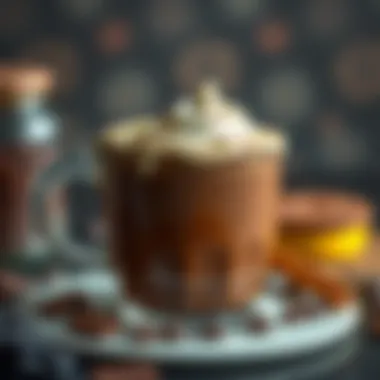
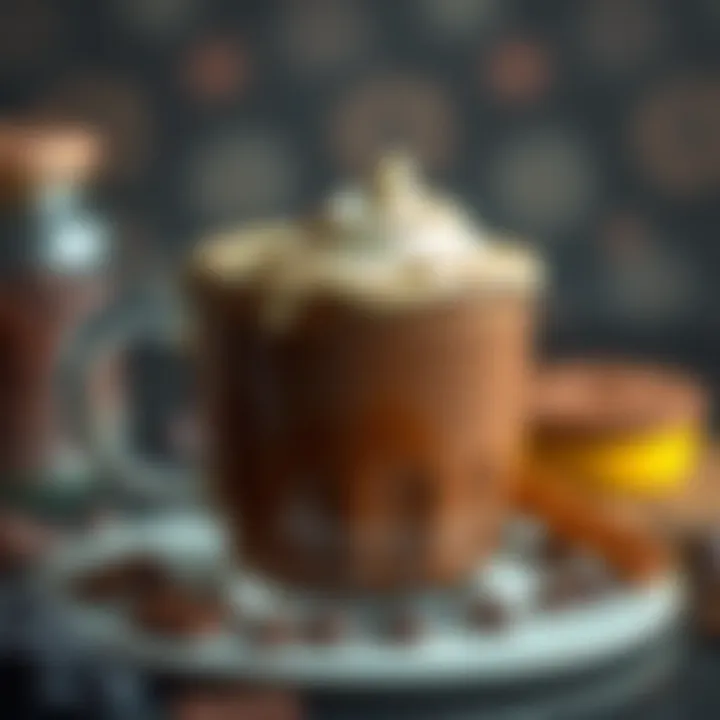
Artisan hot chocolate is much more than a delicious treat; it carries a variety of health implications that are worth delving into. Many people regard this beverage as merely indulgent, but when examined closely, the unique elements of artisan hot chocolate can show its potential benefits and concerns, offering a balanced perspective for those who appreciate this comforting beverage.
Nutritional Benefits of Cocoa
Cocoa, the essential ingredient in artisan hot chocolate, is packed with a multitude of nutritional benefits. First off, it is renowned for being rich in flavonoids, which are compounds known for their antioxidant properties. These antioxidants play a crucial role in reducing inflammation and promoting heart health.
- Heart Health: Regular consumption of cocoa can lead to improved blood flow, lower blood pressure, and reduced risk of heart disease.
- Mood Enhancer: Compounds in cocoa can stimulate the production of serotonin and endorphins, potentially improving mood and reducing stress. It’s akin to a natural pick-me-up!
- Cognitive Function: Some studies suggest that flavonoids in cocoa may support brain function and even enhance memory. This can be particularly beneficial for those seeking a cerebral boost.
Incorporating artisan hot chocolate into one's diet, especially with higher cocoa content, can provide various health perks, making it not just a guilty pleasure but perhaps a thoughtful choice.
Potential Health Concerns
While artisan hot chocolate can come with its list of benefits, it’s essential to remain mindful of the potential health concerns associated with cocoa consumption. One should consider several factors:
- Added Sugars: Many artisan hot chocolate recipes include significant amounts of sugar, which can offset some of the health benefits. Overindulgence may lead to weight gain and other metabolic issues.
- Caloric Intake: Artisan versions, often richer than standard hot chocolate, might result in higher calorie consumption. Moderation is key.
- Caffeine Content: Cocoa naturally contains caffeine. For some individuals, especially those sensitive to caffeine, consuming large quantities could lead to restlessness or disrupted sleep.
"While enjoying artisan hot chocolate in moderation, awareness of its health implications is key to savoring its joys without the potential downsides."
Pairing Artisan Hot Chocolate
Pairing artisan hot chocolate with the right food can transform a simple drink into a multi-sensory experience. When it's done right, you'll not only heighten the flavors of the hot chocolate itself but also elevate whatever you choose to have alongside it. The interplay of tastes and textures can create memorable moments at any gathering, or simply make a quiet afternoon feel festive.
Cheese and Chocolate
Pairing cheese with hot chocolate might seem unusual at first glance, yet it offers an intriguing avenue for culinary exploration. The creamy and sometimes tangy profiles of cheeses work beautifully with varying flavors of chocolate.
Consider a rich dark chocolate made with high-quality cocoa beans paired with a sharp aged cheddar. The boldness of the hot chocolate cuts through the creamy texture of the cheese, leading to a delightful contrast. Meanwhile, a sweet chocolate infused with vanilla could beautifully complement a brie or camembert, where both the chocolate and cheese share a similar creaminess.
Here’s how one might approach this pairing:
- Choose complementary flavors: A chocolate with berry notes can go well with a sharp goat cheese, while a spicy hot chocolate might fancy a blue cheese for an adventurous combination.
- Vary textures: The contrasting textures can enhance the overall tasting experience; for example, a hard cheese with a smooth hot chocolate creates an interesting tactile interplay.
"The best pairings often challenge your expectations, leading to surprising but harmonious combinations."
Dessert Pairings
When it comes to dessert, artisan hot chocolate can either stand out as the star of the show or play a supporting role to other sweet delights. The trick is knowing how to balance flavors so that nothing overshadows the complexity of your hot chocolate.
For instance, a dark mocha hot chocolate might be delightful alongside a simple chocolate tart. The richness of both can provide a decadent experience sure to satisfy sweet cravings. Alternatively, light desserts, such as a fruit tart or a sorbet, can brighten the palate and balance the lushness of the hot chocolate.
Here are a few considerations when pairing dessert with artisan hot chocolate:
- Go for contrast: If your hot chocolate is rich, try pairing it with lighter, airy desserts. A panna cotta or a fruit soufflé might enhance the overall tasting experience.
- Texture matters: Soft, fluffy desserts can create a delightful contrast to the velvety richness of hot chocolate.
Crafting Your Own Recipes
Crafting your own recipes is a vital part of enjoying artisan hot chocolate. This process transcends merely following instructions; it revolves around personal touches and preferences that create something truly unique. The beauty of hot chocolate lies in its flexibility, allowing both novice and seasoned cooks to experiment with ingredients, techniques, and creativity. By venturing into the realm of homemade recipes, you start not just a culinary journey but also a heartfelt connection to your beverage, enhancing both flavor and enjoyment.
Experimenting with Flavors
Experimenting with flavors can be priceless when it comes to creating your own artisan hot chocolate. You can use a wide array of ingredients that elevate the standard hot cocoa experience. Think of it as painting on a canvas; each addition is like a brushstroke, contributing to a distinctive masterpiece.
Common Flavor Additions:
- Spices: Cinnamon, nutmeg, and cardamom can provide warmth and complexity.
- Extracts: Vanilla, almond, or even orange extracts can brighten the overall profile.
- Chili Powder: A dash of this can give some heat, creating a surprising twist.
- Sweeteners: Explore options beyond sugar, such as maple syrup, honey, or even flavored syrups.
Consider the balance—sometimes leaving a few ingredients alone can lead to an uninhibited focus on chocolate's rich essence. If you're feeling adventurous, why not try adding a little espresso or matcha to the mix? The possibilities are virtually endless, making the act of flavor experimenting an exciting, personal journey.
Documenting Your Process
Documenting your process adds an extra layer to the experience of crafting recipes. By keeping a record, you're not just documenting the ingredients you used; you’re noting your thoughts, discoveries, and changes as the recipe evolution unfolds. This practice enhances your cooking skills while also preserving the memory of flavors that resonated with you.
Ways to Document:
- Recipe Journal: Maintain a dedicated space for every approach you’ve taken. Note the measurements, preparation methods, and any variations.
- Photography: Snap pictures of the process, especially the final product. This can be quite rewarding and useful for future reference.
- Tasting Notes: After each session, jot down what you liked, what could be improved, or how different flavors worked together.
"Documenting is the bridge between ideas and mastery."
In closing, crafting your own artisan hot chocolate recipes isn't just about cooking. It's about expression, experimentation, and a deeper appreciation for all aspects of this beloved beverage. So why wait? Get mixing, tasting, and keep track of every delicious step along the way!
Closure: The Artisan Hot Chocolate Experience
As we draw our journey to a close, it's clear that artisan hot chocolate is more than just a beverage; it's a layered experience that intertwines history, culture, and personal creativity. With every cup, you're not merely indulging in a taste of chocolate, but you’re also partaking in a tradition that spans centuries and crosses continents. This exploration has shed light on the immense depth behind artisan hot chocolate—a seemingly simple drink that reveals an intricate world of flavors and textures.
One cannot underestimate the importance of quality ingredients. The meticulous selection of single-origin cocoa or the choice between dark, milk, or white chocolate plays a pivotal role not just in flavor but in the beverage’s overall narrative. Furthermore, the incorporation of fresh local ingredients, such as spices like cinnamon or nutmeg, elevates the drink into a unique experience tailored to personal preferences.
Preparation techniques have also been a significant part of the artisan journey. The contrasting methods of traditional stovetop preparation versus more modern techniques like sous vide highlight the burgeoning trends that enthusiasts are embracing. Through this variety, each individual can find their own rhythm in crafting a perfect mug of hot chocolate, thus solidifying their connection to this cherished drink.
The art of pairing artisan hot chocolate with complementary flavors or dishes further enriches our understanding. Whether it’s a sharp cheese that balances sweetness or a decadent dessert that harmonizes with its richness, these pairings open up a world of possibilities, making the experience feel expansive rather than limited.
"Hot chocolate isn’t just a drink, it’s a story written in flavors, memories, and innovation."
Summarizing the Journey
In this article, we embarked on an extensive exploration of artisan hot chocolate. From its storied origins rooted in ancient civilizations to its modern expressions that emphasize quality and sustainability, each section has contributed to a richer understanding of this beloved beverage.
- Taste and Tradition: Tracking its historical significance helped illuminate how different cultures have shaped what we now know as artisan hot chocolate.
- Quality Ingredients: Distinguishing between artisan and standard hot chocolate highlighted the irreplaceable role of high-quality components in crafting exquisite beverages.
- Innovative Techniques: The diverse preparation methods pave the way for personalization, encouraging individuals to express their unique palates.
- Pairing Wisdom: Understanding food pairings allowed readers to extend their experience, merging flavors in harmonious ways.
Ultimately, this article serves not just as a guide but as an invitation to become a part of the global artisan hot chocolate community, where every cup tells a story that just might inspire the next unique flavor or method discovered. As you enjoy this delightful beverage, may you always remember that there’s a world of flavor waiting beyond the standard enjoyment—one that invites you to savor every moment.















